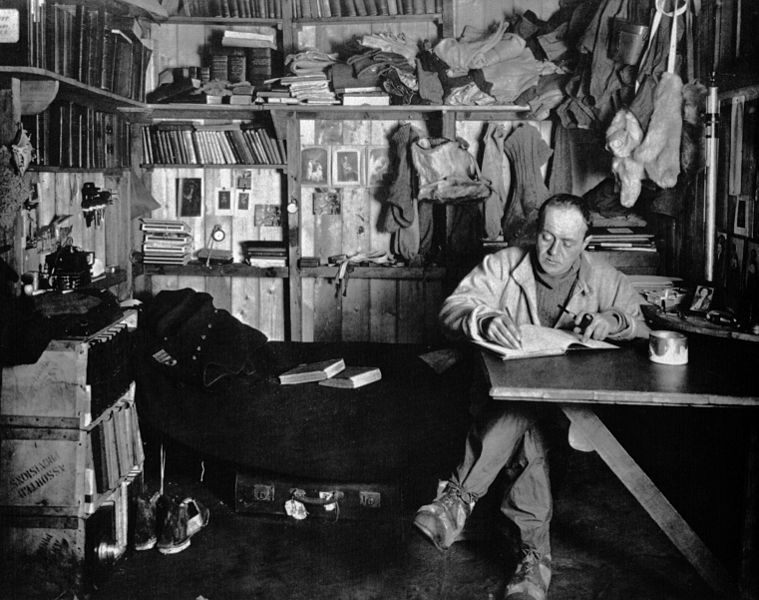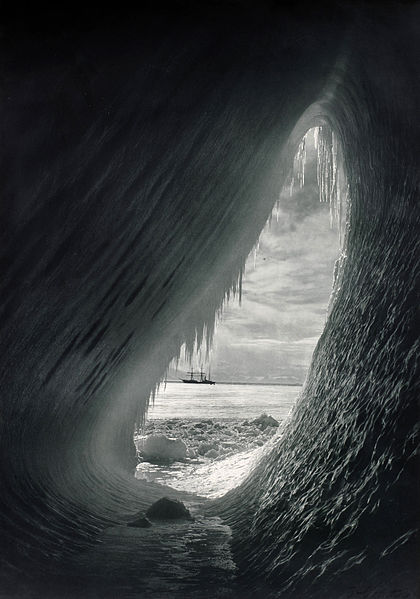I cannot mention Frank Hurley without also discussing the other great early twentieth century English Antarctic Photographer, Herbert George Ponting FRGS (1870-1935). Ponting was photogarpher and cinematographer for Robert Falcon Scott’s ill-fated Terra Nova Expedition to the Ross Sea and South Pole (1910-1913).
Scott achieved the Pole only to find the tent erected by Roald Amundsen‘s Norwegian Expedition. His team died tragically on the return journey and were eventually found frozen in their tent, having suffered severely from scurvy.
Born in England, the son of a banker, Ponting emigrated to California where he married Mary Biddle Elliot and bought a fruit ranch. After the ranch failed, Ponting took up free-lance photography and photographed the Russo-Japanese War. He published his photographs “In Lotus Land Japan,” which led to his being elected to the Royal Geographical Society. This in turn lead to his being signed on by Scott for the Terra Nova Expedition.

Figure 1 – Herbert Ponting “Robert Falcon Scott in Winter Camp.” Image from the Wikicommons and in the public domain.
In the Antarctic he took outstanding images on glass plates (despite the availability of film) including autochrome plates. To me his most memorable image is “Ice Grotto,” Figure 1. He also took wonderful flash photographs of expedition members in their hut. Figure 2 is such a photograph of Scott.
Scott’s death was legendary and a result, after World War I, Ponting published a book of his Antarctic photographs “The Great White South” in 1921. He also produced two documentary films about the Terra Nova Expedition: “The Great White Silence,” a silent film in 1921 and “Ninety Degrees South” a film with sound in 1933. Ponting died two years later in 1935.

